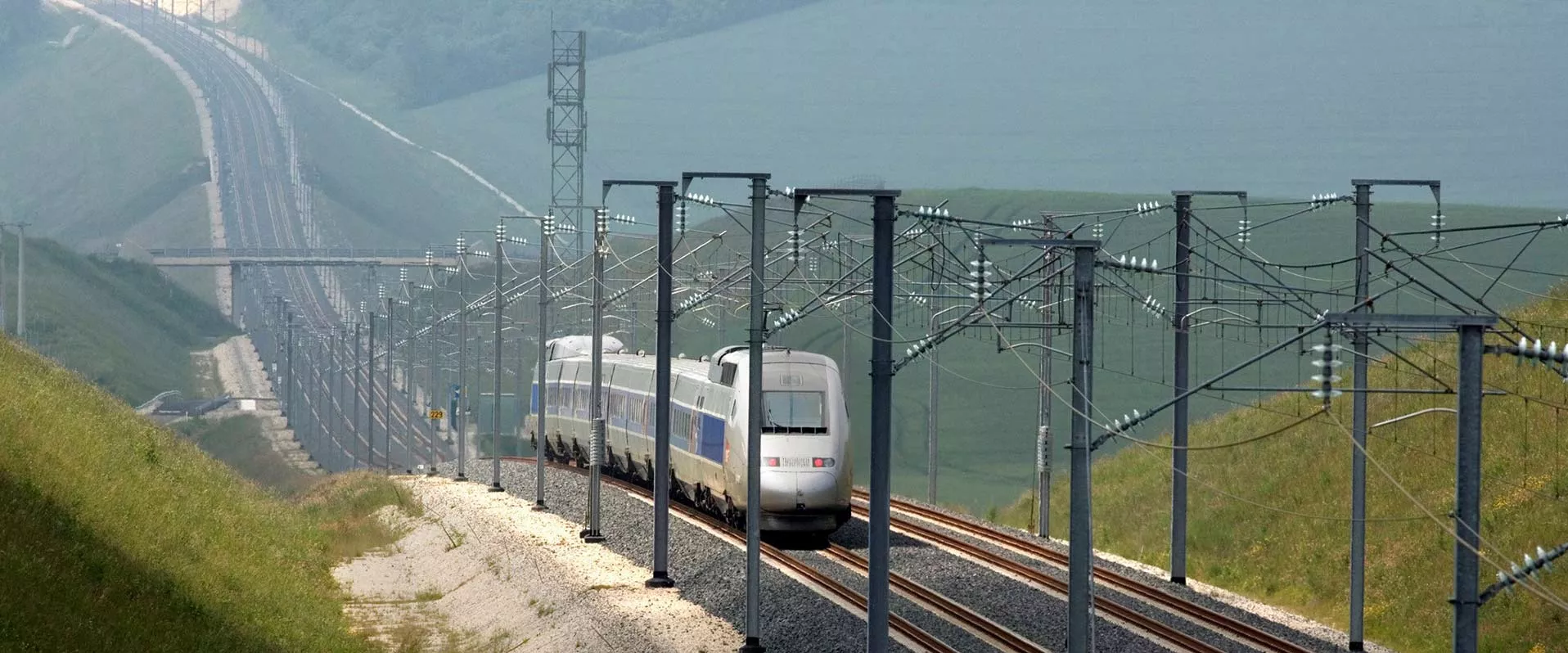
Where telecoms meet rail
From their beginnings, telecommunications and rail have been inseparable, and today both sectors are responding to profound technological change. Pierre-Yves Petton, head of the Telecoms & IoT Research Programme in SNCF’s Technology, Innovation and Group Projects Division, tells us more.
What role do telecoms play in the rail system?
They’re a critical building block. Trains couldn’t run without them, because rolling stock needs a constant flow of data to operate safely on the network. Imagine driving a high-speed TGV at 320 km/h. At that speed, it’s impossible to read the signalling along the track, but you still need to send and receive information. That’s where telecommunications come in. And that’s just one example of how we use them.
How so?
Everything depends on the type of service. In the example I just gave, we’re talking about critical services—all the data involved in operating trains safely. By contrast, business services are everything that improves the passenger experience, such as onboard wifi. And then there are performance services, which are less obvious to the public but just as essential.
What do they cover?
Performance services are everything that makes the rail system work better, particularly connected objects and the IOT1. Sensors on today’s trains generate millions of data points—a colossal quantity of information. We store this data in the cloud and analyse it to optimize both service quality and rolling stock maintenance.
So the range of applications is incredibly broad?
It is. We always need to be ready to incorporate new use cases that call for complex, changing technologies, and that means working with a wide range of configurations. Examples include enabling communication between the command centre and our rolling stock, and setting up one set of dedicated resources for employees and another for customers. Plus providing good connectivity in stations, regardless of population density.
How do telecoms drive performance?
Take driver assistance systems. That’s a major innovation for rail, and they wouldn’t be possible without telecoms. But the same is true for classic trains. We optimize driving by sending a steady flow of information to drivers, telling them when to brake, and when to speed up and slow down. That keeps traffic flowing smoothly, which lets us add more train paths and keep more trains in operation.
So telecoms optimize management of the rail system?
In the rail industry, telecoms aren’t an end in themselves. They’re an enabler, with benefits you can see immediately. Aboard a train, they aren’t just the phone in the driver’s cab—they also supply drivers with data through the indicators on the train’s control console. Telecoms deliver all the information they need, in the right way and at the right time. The control console is like the dashboard in a car—it’s the human-machine interface.
What innovations are you working on now?
One of our priorities is exploring 5G, to get a thorough understanding of what it can do for rail. Today we use the GSM-R2 system, based on 2G technology from the early 2000s. That’s no surprise, because life cycles are long in the rail industry. You don’t replace a TGV as fast as you replace a car.
But now’s the time?
Yes. It’s time for a change, for 3 reasons. First, we have no choice. The GSM-R system still works perfectly, but it’s becoming obsolete. Suppliers are planning to discontinue maintenance on it in 2030.
And the other reasons?
New ways of working make heavier demands on telecommunications—more bandwidth, faster reaction times and so on. That makes GSM-R a thing of the past. Driver assistance systems need to be able to send videos, and 2G just can’t do that. What’s more, it’s vital for us to have interoperability with other players in the European rail market, and they’ve begun transitioning to 5G too. Finally, as I mentioned earlier, we need to meet a higher bar for service—aboard trains, in stations and in rolling stock maintenance.
Where are you in the transition?
The new FRMCS3 system requires 5G, and rollout is now in the preliminary study stage, where innovation plays a critical role. Like 5G, our future rail communication system is still being standardized. In telecoms, everything depends on standards, because all connected devices need to speak the same language, no matter who made them or where they came from.
What innovations might be possible with 5G?
Apart from driver assistance, which will be possible with 5G, augmented reality has real innovation potential. It could benefit not only our employees, but our customers, who could use it to get highly personalized information in stations. One day, our train drivers will be able to discuss technical problems with maintenance specialists in real time. That’s why we’re working today to develop a robust, high-performance pipeline that can handle those complex data flows.
What are your biggest projects, other than FRMCS³?
We’re thinking about changing the way we deploy telecoms services for small lines. A telecommunications system costs a lot—antennas, masts, kilometres of cable and all the rest. But what about lines in rural communities, where we want to keep costs down? It’s our job to find an alternative. Maybe communications via satellite or through a network of public operators? That’s the kind of scenario we’re working on.
Why?
To avoid having to deploy full-scale infrastructure on lines that are much less profitable than the more heavily trafficked ones. That’s a good example of our guiding principle: How can telecoms make the rail system better? That’s the question we keep asking ourselves.
Rail Telecommunication – What is FRMCS, the Future Railway Mobile Communication System?